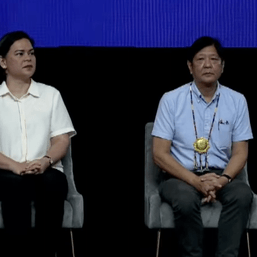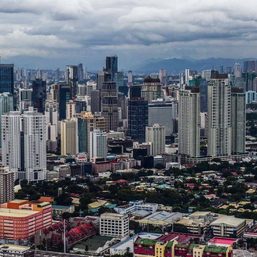SUMMARY
This is AI generated summarization, which may have errors. For context, always refer to the full article.
![[ANALYSIS] What they don’t tell you… and why we need these ‘inconvenient truths’](https://www.rappler.com/tachyon/2023/05/what-they-dont-tell-you-may-23-2023.jpg)
Reader, if you want to know the real state of the nation insofar as our development is concerned, all you have to do is read the Philippine Development Plan (PDP) 2023-2028. Like its predecessors, it always starts with the base line – where the country is at the start of the plan. It also, of course, tells us where the country wants to be at the end of the Marcos Jr. administration, as well as how we are to get there.
But whether we like it or not, the document is a government one, and there is always that desire to gloss over the unpleasant parts, i.e., those that have to do with government failures, and present things in the best possible light. The National Economic and Development Authority (NEDA) is, perhaps, the government agency that is the least likely to be giving us this kind of snow job, but one can (at least I can) still tell when it is holding back, so as not to offend the bosses.
In any case, the PDP is about 460 pages long, and is not easy reading. I seriously doubt whether President Ferdinand Marcos Jr. (PBBM) or, for that matter, any of the political leadership, have read it – and they will not be the first non-readers. Politicians generally think that they know it all already.
Furthermore, PBBM apparently has a sunny personality and has a marked preference for good news. So do all of us, actually, but that should not extend to ignoring unpleasant facts altogether, or we might be creating a beautiful bubble that might burst and leave us with egg all over our faces, pardon the mixed metaphors.
It is also made clear, though, that the success of the PDP requires not only the whole-of-government, but the whole-of-society as well. That means us, Reader. So if we are to really get into this, to do our thing for our country, so to speak, we must know exactly what we are up against, we must face some very unpleasant, inconvenient truths. I will deal with what I consider the most important of them, and I will use the four other members of the ASEAN-5 countries (Indonesia, Malaysia, Thailand and Vietnam) as comparators.
The FIRST INCONVENIENT TRUTH is that the Philippines has the lowest GDP per capita among the ASEAN-5. This means the Filipino people have less income than the people of either Malaysia, Thailand, Indonesia or Vietnam.

But this was not always the case. Look at the situation in 1960 (at this time, Vietnam was at war with itself, and joined the ASEAN only in 1995).

Reader, you will note that the Philippines is the kulelat (last) of the ASEAN-5. But you can also see that there was a time (1960) when the country was number two only to Malaysia, whose per capita GDP was only 12% higher than the Philippines’, instead of the 225% higher that it is today (2021). Also, note that the Philippines had a higher per capita income than Thailand (37% higher) in 1960, while today its per capita income is less than half of Thailand’s. And we had per capita income 90% higher than Indonesia’s, where today the situation is reversed, and Indonesia’s per capita income is 46% higher than ours.
Malaysia left us behind, and outdistanced us more and more from the very beginning. Thailand caught up with us in 1983, when the Philippine economy collapsed due to its foreign debt crisis. Indonesia overtook us in 2003, while Vietnam overtook us in 2020 (these, in nominal terms).
Why did this happen? Simple: their GDP growth rates were higher than ours or the growth rates of their population were lower than ours (GDP per capita growth rates are equal to the growth rate of GDP minus the growth rate of the population). And what are the factors contributing to the differences in growth rates between countries?
Sachs lists them as initial conditions, natural resources and geography, government policies/institutions, and demography. And you guessed it, Reader. Government policies and institutions account for from 70-89% of the growth differentials between countries. Which suggests that if we, the whole-of-society, want to help in this regard, we get involved in government ourselves (barangay elections), and we choose our leaders more wisely. (To be continued) – Rappler.com
Solita “Winnie” Monsod was the first National Economic and Development Authority secretary appointed after the fall of the Marcos dictatorship in 1986. She is a professor emerita at the UP School of Economics where she taught starting 1983. She finished her degree in economics in UP and obtained her masters in economics at the University of Pennsylvania. She is a board director of Rappler Inc.
1 comment
How does this make you feel?



![[Just Saying] SONA 2024: Some disturbing points](https://www.rappler.com/tachyon/2024/07/TL-marcos-sona-points-july-23-2024.jpg?resize=257%2C257&crop=335px%2C0px%2C720px%2C720px)


![[In This Economy] Part 2 | POGOnomics: Are we banning POGOs out of fear, outrage, not rational thought?](https://www.rappler.com/tachyon/2024/06/thought-leaders-pogonomics-part-2b.jpg?resize=257%2C257&crop=292px%2C0px%2C720px%2C720px)
![[In This Economy] POGOnomics: Weighing the costs and benefits of POGOs](https://www.rappler.com/tachyon/2024/06/thought-leaders-pogonomics-part-1.jpg?resize=257%2C257&crop=279px%2C0px%2C720px%2C720px)
![[In This Economy] Is the Philippine economy stable?](https://www.rappler.com/tachyon/2024/05/philippine-economy-stable-may-10-2024.jpg?resize=257%2C257&crop=461px%2C0px%2C1080px%2C1080px)



![[In This Economy] Is the Philippines quietly getting richer?](https://www.rappler.com/tachyon/2024/04/20240426-Philippines-quietly-getting-richer.jpg?resize=257%2C257&crop=194px%2C0px%2C720px%2C720px)
![[Vantage Point] Joey Salceda says 8% GDP growth attainable](https://www.rappler.com/tachyon/2024/04/tl-salceda-gdp-growth-04192024.jpg?resize=257%2C257&crop_strategy=attention)
I agree that reading the 460 pages long Philippine Development Plan 2023-2028 is very challenging both in terms of time, mental energy and intellectual acuity. And, to be realistic, we should not expect President Marcos Jr. to have completely read, analyzed and understood it. For this first part of her article, it is sad to realize how our national economy performed compared to our ASEAN neighbors. Lastly, I am eagerly waiting for the other parts of her article because I expect that I will get new insights from them.